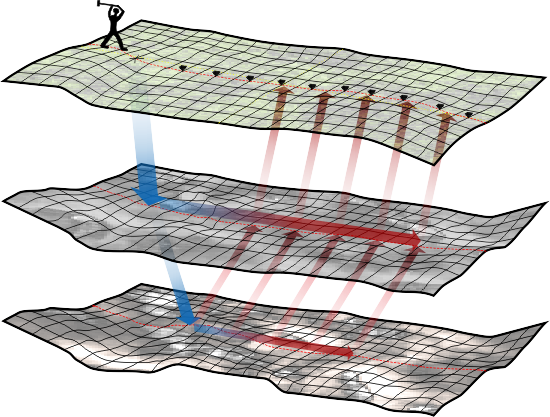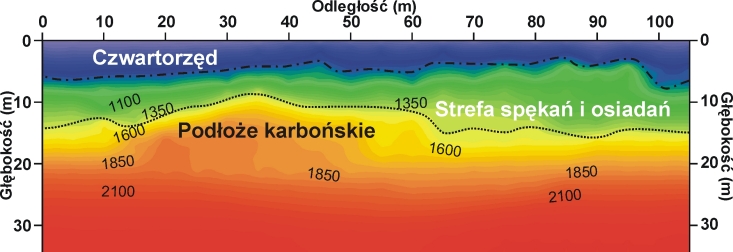Main Page | Knowledge base | Geophysics | Seismic studies | Refraction tomography
SEISMIC REFRACTION TOMOGRAPHY
Refraction tomography bases on the classic seismic refraction studies. Classical refraction gives good results in the ground with relatively low variable structure and layers (which differ significantly in velocities of seismic waves). In contrast, tomography can localize more complex structures where seismic wave velocities change in different directions gradually. Such places are fault zones, areas of karst, voids. Refraction tomography uses “first breaks” of refraction P-waves. The result of refraction tomography is determining velocity field in the tested ground.

Seismic surveys using refraction tomography have lot of applications:
- more accurate diagnosis and course of landslide zones of potential slip surfaces,
- more accurately distinguish of weathering zones,
- delineating solid, non-fractrured bedrock below the weathered layer,
- determining groundwater table level,
- detecting faults, fractures and weakness zones,
- detection shallow voids threatening discontinuous surface deformation.











